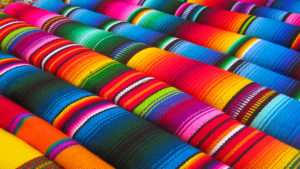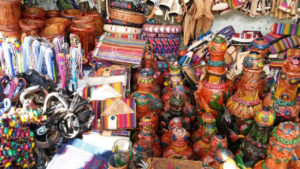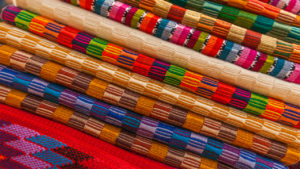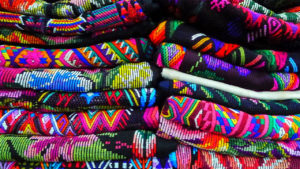An ancient tradition
Originally, huipiles were used exclusively for ceremonial purposes, dating back to the ancient Maya Middle Classic Period. In ceramic figurines, elite women appear dressed in a sort of a loose tunic, without insert sleeves, made from two or more rectangular pieces of cotton cloth. The length varies from knee to ankle. The garment is also represented in other objects that have survive, including polychrome ceramic vessels.
Characteristics of these huipiles, such as their rectilinear form and their production on a back strap loom, have endured to modern times. At the beginning of the sixteenth century, the huipil was transformed with the European conquest and colonization, New materials, such as silk, were incorporated. In some villages, huipiles began to be woven on treadle looms and new decorative motifs were added. Over time, more new materials, new design and a long list of etceteras have been metamorphosing huipiles right up to the present day.
The word huipil comes from the Nahuatl word “Huipilli” which means “my tapado” and in some Mayan languages it is known as “po’t.” Still around 500 AD, the huipiles were used in socio-religious ceremonies, after they began to use more commonly in all branches of society, as indicated by archaeological findings. By means of archaeological discoveries figures of Mayan pottery have been found with women dressed in huipiles who belonged to the elite; The women are dressed in a loose sleeveless tunic, the length varying from knee to ankle.
The materials that were used in the elaboration of the huipiles were the henequen and the cotton, in the Mayan epoch; and then at the time of the conquest, wool and silk were used, and in this period, synthetic fibers such as rayon, sedalina and lustrin were used. To color the tissues they used the cochineal, dye of seashells, bark indigo of certain trees, such as campeche, moral, cashew, cotton and the “cuyuxcate” which was natural coffee.
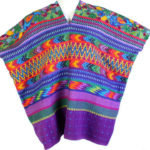 Previous Post
Previous Post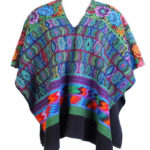 Next Post
Next Post